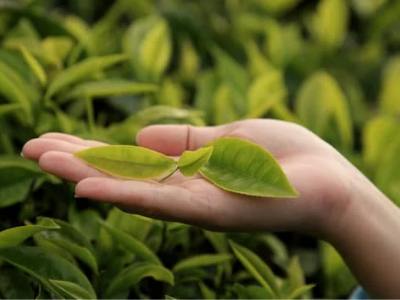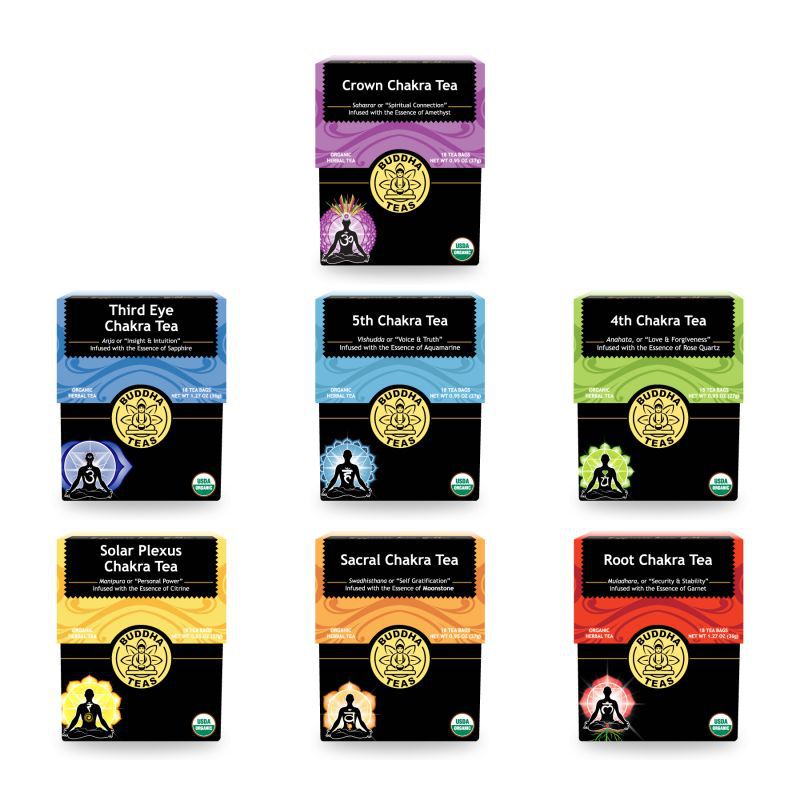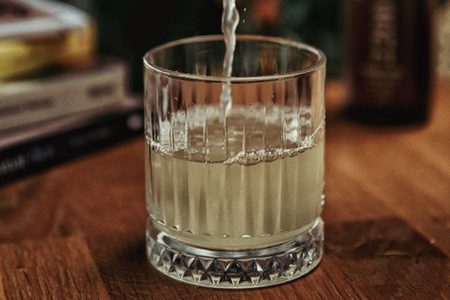With the arrival of hot weather, it’s important to take a few steps to maintain optimal health.
Many people understand the importance of hydration but need to understand the need for electrolytes as opposed to just straight water. Unfortunately, many of the sports drinks on the market are full of sugar and processed additives. I recommend you explore some of the home remedies for a natural electrolyte drink. my go-to is natural sea salt, blackstrap molasses, lemon or lime juice, and water. I may even add a dash of apple cider vinegar. The amount of each depends on your personal taste and will change day-to-day depending on your electrolyte needs. A moderate starting point would be 2 to 3 teaspoons of blackstrap molasses, 1/2 teaspoon of natural sea salt, water, and lemon juice to taste.
If you’re lucky enough to have lotus growing on your property or know how to find the local Asian market lotus Leaf (he ye); you can add a little bit of Goji berry to your drink to give you more energy! Hibiscus or Jamaica makes a nice summer tea as well and adds an extra boost of natural vitamin C.
Recognizing the changes in your nutritional needs is also important. What worked as a good plan in the fall and winter time may not be as optimal in Summer. Summertime is when fresh salads, gazpachos, and fruit really shine. Watermelon, cantaloupe, and other melons are wonderful with a little sea salt and help restore hydration. Cucumbers and celery make nice cool platforms for things like hummus and nut paste. Blend walnuts and water and seasonings to taste such as a steak seasoning. Garlic and olive oil can add healthy fats with a new twist.

Being mindful of the heat is critical, especially if you’ve ever had heat stroke in the past. Unfortunately, once you’ve had heat stroke, you’re more susceptible to it in the future—pay attention to how much you are sweating or worse yet—if you stop sweating. Make sure to take frequent rest breaks and avoid the hottest parts of the day as much as possible when physically exerting yourself.
Sleep can be more challenging when the weather gets hot. Comforters and blankets with cooling properties and swapping out your heavy blankets for lighter throws can help ensure a good night's rest.
Contrary to our American conditioning, cold drinks are not the best thing to drink when it’s really hot! When you look at the traditional drinks in areas of the world where it is extraordinarily hot, they still drink hot teas made of mint or similar aromatic herbs to help encourage sweating and maintain a normal body temperature. In the Eastern model, we view the excessive consumption of very cold drinks, especially during summertime, to be particularly damaging to digestion and overall body function. See if you can learn to appreciate a cool drink as opposed to an ice drink. Your metabolism will thank you!

Now is also the time to stock up on vitamin D—but at our latitude, the window for actually absorbing that vitamin D is pretty narrow. The goal is to get 15 or so minutes of direct sun on your skin between the hours of 11 am and 1 pm (the sun is at the optimal angle during these times to maximize production of vitamin D). For most people, this isn’t enough time to burn so you can safely do this without sunscreen.
And of course, if you’re going to be in the sun for longer periods of time, sun, protective clothing and hats (Look for pieces with UPF-rated protection) are a great idea, as well as an all-natural reef-safe sunscreen.
Hopefully, these tips will help you make it through the summer doldrums feeling fresh and full of good health!
Disclaimer: The information provided in this blog post is for informational purposes only and is not intended as medical advice. Always consult with a qualified healthcare professional before making any changes to your health regimen or treatment.
Don’t get me wrong, I love my morning coffee; yet if I ever had to choose either just coffee or just tea for the rest of my life, tea wins hands down! The health benefits and variety of flavors are just too great to give up! Tea is one of the most heart friendly beverage choices, high in antioxidants and heart healthy polyphenols. No, not that sweet tea at the old greasy spoon, but real tea! Yet many people I talk to either don’t like tea or have never even tried it. This is tragic! I promise you, there is a tea out there waiting for you!
So let’s talk tea!
If you want to get picky, tea is actually a very narrow definition—like coffee—meaning a beverage brewed from the leaves of tea bushes that are harvested at varying stages of growth and prepared in various ways, resulting in everything from white teas to green, black to pu-erh (a fermented and aged form of tea leaf). Most of us also group herbal teas into this category, though technically these are referred to as “tisanes”.
Why bother with all these shrubs and “weeds”? (many of the best herbal teas are considered weeds in some circles!)

Now let’s talk functions!
Want to improve your oral health? White tea to the rescue—its minerals and antioxidants protect the tooth enamel and neutralize acids.
Allergies got you down? Rooibos-based teas can reduce inflammation and mitigate allergy symptoms. (If you have ragweed allergies—avoid chamomile tea and opt for chrysanthemum instead).
Looking for something to help your skin and hair? Yup, rooibos again; as well as horsetail, nettle, and oatstraw.
Menstrual cramps or muscle spasms? Chamomile, nettle, and oatstraw can help soothe those cranky muscles.
Is liver health a concern? Hibiscus and dandelion are excellent liver tonics that also can reduce blood triglycerides and reduce sugar cravings! Chrysanthemum is also great for liver health!
Digestive upset? Peppermint and ginger are powerhouses here!
Arthritis pain? Ginger again—and if you like a more savory tea, blends with turmeric and ginger can be a great option.
Stressed out? Trouble focusing? Oolong tea is high in L-theanine which helps calm the brain and has a moderate amount of caffeine helping to maintain focus and concentration. Oolong is the same plant that green, white and black teas come from, but the special fermentation process gives it this special quality.
Just plain stressed? Chrysanthemum and goji berries are some of my favorites to ease a stressful day.
Another reason I love hot tea is it gives me a chance to slow down and immerse myself in the process of making it. Adding the hot water, savoring the aromas released, watching the colors bloom in the water, and then choosing just the right cup or pot to enjoy my brew from. Tea can be an experience to enjoy!
Different teas also benefit from different steeping times—from less than a minute or two for white and green teas, a couple of minutes for darker teas, or even overnight for nettle and oatstraw; so make sure to check the package instructions.
Last but not least—don’t ruin those health benefits with tons of sugar. If you need a little added sweetness, a dash of fresh honey or stevia for those darker teas often does the trick. Need to sweeten up an herbal blend? Try a couple of goji berries for natural sweetness and an added boost of antioxidants.

We are thrilled to carry Buddha Chakra Teas! "Chakra" is the ancient Sanskrit word for the seven central points of energy that reside within, helping to balance our physical, emotional and spiritual state. Buddha Teas are expertly crafted from herbs that resonate with each chakra, offering stimulating and flavorful teas empowered by the essence of crystals. Whether you're looking for a morning pick-me-up, a relaxing evening brew, or a tea to promote wellness, we have something for everyone!
We carry unique varieties such as:
Root Chakra Tea: When your root chakra is in balance, you feel safe in the world, and free to trust in ways that allow you to take healthy risks, knowing that all will be well. Contains Organic Raspberry Leaf, Organic Ashwagandha Root, Organic Cloves, Organic Dandelion Root, Organic Hibiscus Flower.
Sacral Chakra Tea: The Sacral chakra focuses on creativity, sensuality, and our connection with others. This expertly crafted herbal blend is designed to assist you as you flow your way to sacral chakra health. Contains Organic Calendula Flowers, Organic Burdock Root, Organic Fennel Seed, Organic Dong Quai Root, Organic Damiana Leaf, Organic Ginger Root.
Solar Plexus Tea: This invigorating, solar plexus blend, enlivened with the essence of citrine, provides a truly unique tea experience that facilitates those wishing to connect with their power center. Contains Organic Rosemary Leaf, Organic Lemongrass, Organic Ginger Root, Organic Orange Peel, Organic Marshmallow Leaf.
4th Chakra Tea: The 4th Chakra is a vital chakra to work with, and centers on all aspects of love. This tea is carefully crafted with herbs attuned to the 4th Chakra, and includes the essence of rose quartz. Contains Organic Hawthorn Berry, Organic Hawthorn Leaf, Organic Lavender Flowers, Organic Hyssop.
5th Chakra Tea: Powerful throat-centered herbs, and the essence of aquamarine fortify our 5th Chakra Blend to assist those seeking to heal and balance issues dealing with communication, creativity, and self-expression. Contains Organic Licorice Root, Organic Slippery Elm Bark, Organic Marshmallow Leaf, Organic Wild Cherry Bark, Organic Cinnamon Bark, Organic Fennel Seed, Organic Orange Peel.
Third Eye Chakra Tea: This chakra, located between the eyebrows, highlights insight, knowledge, and wisdom. Third Eye Chakra Tea is crafted from herbs intended to open the third eye energy center. Contains Organic Eyebright Herb, Organic Spearmint Leaf, Organic Star Anise, Organic Passion Flower.
Crown Chakra Tea: This 7th chakra can be described as the crown of spiritual understanding. Located at the top of the chakra ladder, the ingredients within our Crown Chakra Tea have been carefully chosen for their resonance with the crown energy center. Contains Organic Gotu Kola Leaf, Organic Lavender Flowers, Organic Nutmeg Seed, Organic Rose Petal.
Each blend is carefully selected for its unique health benefits and delicious taste. Try Buddha Chakra Teas and experience the difference that quality ingredients make!
It's that time of year again, where the temperatures are rising and a cool refreshing drink is starting to sound mighty good! We thought we'd share this recipe that's great for a large crowd (or can be saved to drink later) and is easy to adjust for your sweetness preference. We suggest starting with a little agave syrup (its sweetness is very concentrated!) and adding more to suit your taste if you like things on the sweeter side. Adding fresh fruit slices also makes it double as a sort of 'dessert', and is better than grabbing that big slice of cake!
If you like this recipe, don't forget to check out our 'Rethink Your Drink' series, where we share our favorite non-alcoholic beverage ideas and recipes!
Ingredients:
1/3 cup agave syrup (can adjust for more/less sweetness)
2 quarts 100% grape juice
1 pint lemon juice
1 quart green tea
1 small block of ice or ice cubes
2 quarts club soda
1 lemon, sliced, for serving (optional)
Directions:
Combine agave syrup, grape juice, lemon juice and green tea. Chill for 1-2 hours.
Place the block of ice in a large punch bowl. Pour the chilled punch over the ice. Add club soda.
Serve with lemon slices, or add any chopped fruit of your choice. We like pineapple, limes, and strawberries!
Makes approximately14 servings.
Follow Raja Wellness on Facebook and Instagram!
Follow Raja Goods on Instagram!
Getting our kids to eat healthily doesn’t have to be a nightmarish challenge. You don’t have to be a chef to make delicious meals the family will enjoy; you don’t have to be a master negotiator either. Getting our families to eat more healthily often starts with what is most readily available in the home and our own habits and attitudes when it comes to food. Children often mimic us caregivers—so leading by example can be very effective (for all of us!).
Here are a few tips and reminders to help instill those healthy habits—easily!

These changes may need to be done gradually, and it may take some time for everyone to adjust. If the habits have been in place for a while, just remember to practice patience, understanding, and open dialogue, and the payoff will be huge—with better nutrition, overall health, improved energy, money, and time savings in the end. Eating healthy won’t seem like a “downer” or “punishment”; but a real treat that can be easily shared among the family—and can instill healthy habits that can last a lifetime.
The new year has arrived, and many of us have finalized our resolutions list and are ready to put our plans into action for a flourishing year ahead. More often than not, we aim to focus on our health—and make up for any detrimental behaviors we participated in prior. And let’s face it—while some of us have become rather health-conscious over the past couple years; some of us have picked up or over-indulged in some less than desirable habits recently, especially considering the stress we’ve all been under (crazy times!). Let’s rethink that alcoholic drink into something that nourishes the body and spirit!
It can seem difficult to cut back. There will always be a hard week, a reason to celebrate, a social function where drinks are flowing, an encounter with the in-laws (yikes!). You get the idea; things that prompt a drink are plentiful. But the health benefits of not only cutting back your alcohol intake, but replacing it with something that’s good for you are even more plentiful, and it doesn’t have to feel awkward or like you’re making a sacrifice.

Let’s start with Kombucha! Kombucha is a great replacement for an alcoholic beverage when you’re craving a tangy, refreshing beverage. It’s made from a base of green or black tea and sugar, and is fermented from a week, up to a month. The fermentation process does produce a TRACE amount of alcohol. Less than 0.5%. But that process also creates that zingy flavor that pleases a refined palate with a little “kick.”
Kombucha is high in polyphenols—which promote gut, brain, and heart health. It’s also rich in B vitamins and contains compounds that in some studies have been associated with improved GI and liver function. Be careful to choose kombucha with no added sugar, or if you’re up for trying something new, you may enjoy making your own kombucha at home.
If you enjoy the art and ritual of creating a cocktail, consider hand-crafting a delicious mocktail instead. Make one for yourself after a long day and enjoy as you begin to wind down, or offer mocktails the next time you host a dinner for friends at your home! It’s fun to play around with ingredients and cater to your own personal taste. If you love to cook, up your game by pairing a thoughtfully crafted mocktail with your best dinner recipe. Keeping it more simple, try serving some tacos and pair with this tasty and easy “margarita” recipe:
Ice
4 lime wedges
1 ½ oz fresh lime juice
1 ½ oz fresh lemon juice
3 oz simple syrup
1 ½ oz sparkling water
2 tbsp kosher salt (I highly recommend the Margarita Sea Salt blend at Raja Goods! It’s a course, smoked chipotle salt)
Place salt on a plate and set aside. Place a lime wedge over the rim of your margarita glass, swiping it around the glass until the rim is wet. Turn the glass upside down, setting the rim into the salt. Repeat with a second glass. Pour lime juice, lemon juice, simple syrup, and sparkling water in a cocktail shaker filled with ice . Put the top on the cocktail shaker and shake to combine and chill. Pour into glasses and garnish with a slice of lime. Enjoy!
Here at Raja Wellness and our new store, Raja Goods—we have a special love for mocktails. We offer blends made from high quality, adaptogenic herbs to be enjoyed along with their many health benefits. Be sure to ask about our mocktails at your next visit!
If you’re reluctant to miss out on your favorite spirits, you may want to check out www.ritualzeroproof.com. They offer replacements that taste just like the real thing! Add to a healthy mocktail and you won’t miss a bit of the flavor from your favorite drink.
Remember, big improvements come from small adjustments. Consider rethinking your drink as a resolution this year. Cheers!
In Part 1, I wrote about why many of the drinks waiting on store shelves really aren’t good for you because of the sugar in them. I didn’t really touch on the chemicals in them that we might be concerned about, but let’s just say most drinks you can buy aren’t good for you. It’s that simple. Even water can be a concern because of the leaching of chemicals from the plastic- in many cases, we don’t know if they are bad but we also can’t say they are good because it simply hasn’t been studied long-term. So what to drink? Many patients fear that giving up sweet drinks means a life of drinking only water. Never fear, there is hope! Welcome to the wonderful world of teas and tisanes.
Studies have found that some teas may help with cancer, heart disease, and diabetes; encourage weight loss; lower cholesterol, and bring about mental alertness. Tea also appears to have antimicrobial qualities.
“There doesn’t seem to be a downside to tea,” says American Dietetic Association spokeswoman Katherine Tallmadge, MA, RD, LD. “I think it’s a great alternative to coffee drinking. First, tea has less caffeine. It’s pretty well established that the compounds in tea – their flavonoids – are good for the heart and may reduce cancer.”
There is significant literature on the health benefits of tea that I won’t repeat here, but the short version is for most people teas and tisanes are a healthy beverage choice with many varieties and flavors to choose from.
Let’s start with tisanes since most of you are already familiar with teas. Tisanes have no caffeine and depending on the ingredients you choose can have a wide variety of health benefits. The challenge is finding the ingredients locally because many haven’t made their way mainstream yet. Some Asian or international markets will have some. We carry some of these harder to find tisane ingredients for sale in loose form for our communities. They can be brewed and enjoyed hot or cold. In addition to many varieties made from herbs and fruits, a popular tisane is a rooibos. Rooibos teas are a naturally sweet and sometimes nutty herbal tea made from the South African Red Bush. The rooibos tea processing method involves harvesting the red bush leaves, followed by grinding and bruising of the leaves.
Most grocery stores have a wide selection of tisanes (or herbal teas). I recommend reading the labels and selecting those that are organic and without synthetic ingredients. You can even make your own at home from dried or fresh mint, organic citrus peels, fresh ginger, cinnamon...the options are endless.
Teas come in so many varieties- there is a whole world of flavors to explore. Here’s a quick summary of types, all are made from the Camellia sinensis plant:
Black tea made by a process of withering then rolling the tea leaves followed by a long period of fermentation. Then the black tea leaves are fired resulting in a loose leaf black tea with a complex yet recognizable smell and full-bodied, strong flavor.
Need some inspiration for your own teas or tisanes? Here are some of my favorites:
If you need help selecting a tisane specifically designed to support your health needs let us know during your next appointment! Do you regularly drink teas or tisanes? What is your favorite?
References:
Tea: A drink made by steeping the leaves of a type of Camellia sinensis in hot water.
Tisane: An infusion of leaves or flowers used as a beverage, e.g. an herbal tea.
http://www.webmd.com/diet/features/tea-types-and-their-health-benefits
What do you reach for when you are thirsty? Is it a cold soda? An energy drink to get you through the afternoon? Or as many people do around here in Kentucky, a nice tall cup of sweet tea? Did you ever stop to think about what’s in your drink? Are those artificial colors and flavors, the amount of caffeine and the sugar (most often as high fructose corn syrup) really good for you? When you look at the numbers on the label is it really all that bad? What’s wrong with a little sugar in your drink?
This post gives a great summary of what happens when that 20oz of soda hits your body. That 20oz of soda has about the equivalent of ⅓ of a cup of sugar. Would you ever just sit down and eat ⅓ of a cup of sugar? And sometimes the drinks that look the healthiest may have the most sugar. Many fruit smoothies have more sugar than 10 glazed doughnuts!
Now I imagine my diet soda drinking readers are feeling good about their no sugar choice but not so fast! It’s well documented that drinking diet soda is correlated with increased risks of metabolic syndromes and cardiovascular disease.
So how about a nice glass of wholesome juice? It’s natural and can have good nutrients in it if you get the kind without added sugars, so it must be good, right? The key is how much. All fruit is high in fructose but when you eat the whole fruit you get the fiber with it which modulates its effect. Fruit juice is a straight shot of fructose and unlike glucose which can be used by every cell in the body, fructose can only be processed in the liver. Fructose is taken straight to the liver where it is metabolized into free fatty acids (FFAs), VLDL (the damaging form of cholesterol), and triglycerides, which get stored as fat. When you eat 120 calories of glucose, less than one calorie is stored as fat. 120 calories of fructose results in 40 calories being stored as fat. Turns out those little juice glasses used by your grandparents and great-grandparents were about the right size for a healthy serving of juice and more is not better.
So what’s with all these sugars and why do we care? When fructose combines with glucose, it makes sucrose. Sucrose is abundant in sugar cane, sugar beets, corn, and other plants. When extracted and refined, sucrose makes table sugar. “In the 1800s and early 1900s, the average American took in about 15 grams of fructose (about half an ounce), mostly from eating fruits and vegetables. Today we average 55 grams per day (73 grams for adolescents). The increase in fructose intake is worrisome, says Lustig, because it suspiciously parallels increases in obesity, diabetes, and a new condition called the nonalcoholic fatty liver disease that now affects up to one-third of Americans.”
And it turns out for many people there are two main sources of fructose and glucose in our diets: processed foods (even those that aren’t sweet like canned soup) and drinks. This means options for a healthy drink when eating out are often limited to water or unsweetened iced tea. So what to drink? Time to explore the wonderful world of teas and tisanes - which will be in our next article!
References: